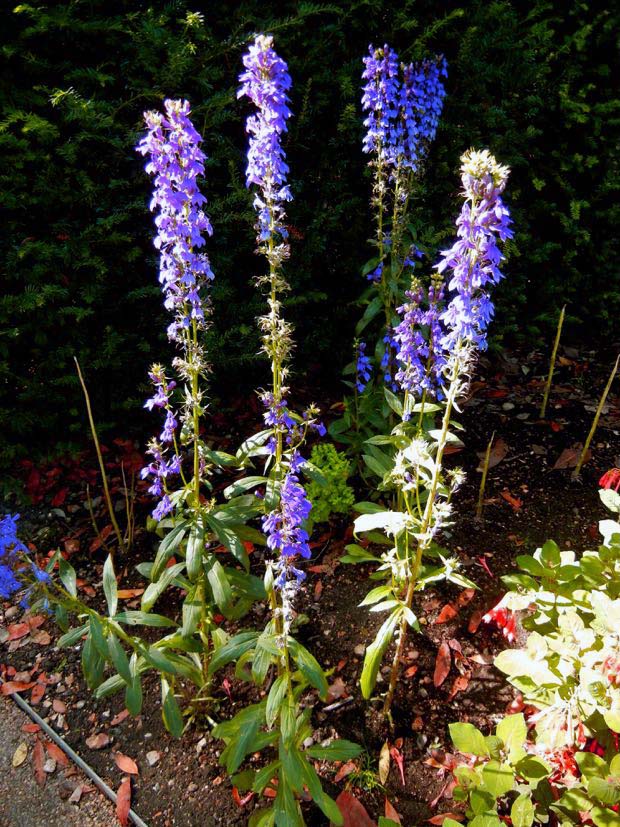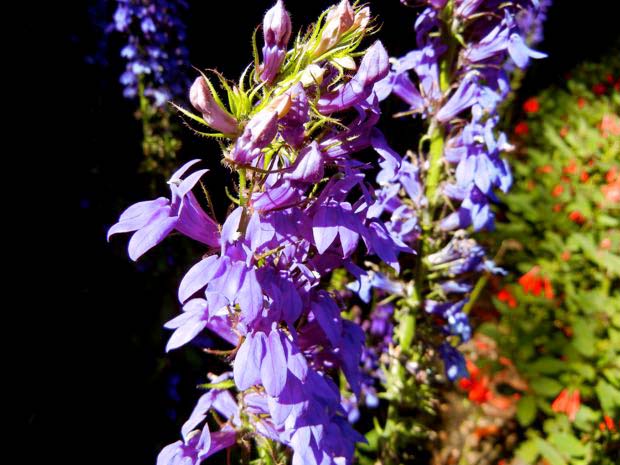Lobelia siphilitica: The Enchanting Blue Cardinal Flower
Description:
Lobelia siphilitica, also known as the Great Blue Lobelia, Great Lobelia, Big Blue Lobelia, Virginia Bellflower, Vomit Root, Tall Blue Lobelia, or Blue Cardinal Flower, belongs to the Campanulaceae family of plants. This North American native perennial is renowned for its striking blue-violet flowers and lush foliage.
Habitat and Distribution:
Lobelia siphilitica is native to North America, specifically eastern and central Canada, as well as the United States. It thrives in a variety of habitats, including wet meadows, stream banks, and woodland edges. Its adaptability allows it to grow in both sunny and partially shaded areas.
Characteristics:
This unbranched perennial can reach a height of approximately 3ft or 90cm. Though it is considered a short-lived perennial, Lobelia siphilitica can live for a few years, gracing the garden with its presence. The plant produces zygomorphic flowers in a striking violet color. The flowers emerge from the leafy bracts and bloom in late summer, typically from August to October. With a two-split upper lip and a three-split lower lip, the flowers exhibit an alluring structure. To facilitate reproduction, Lobelia siphilitica relies on pollinators to assist with its pollination process.
How to grow Lobelia siphilitica:
To successfully cultivate Lobelia siphilitica, follow these guidelines:
Light and Soil: This plant thrives in various light conditions, including full sun, partial shade, or even full shade. When selecting a planting location, ensure the soil is moist and well-drained. While Lobelia siphilitica can tolerate different soil types, it flourishes in moist conditions.
Wildlife Attraction: Lobelia siphilitica is known for attracting bees, birds, and butterflies to the garden. Its vibrant flowers serve as a valuable nectar source for these pollinators.
Toxicity: It’s important to note that Lobelia siphilitica could be toxic if consumed in large quantities. Exercise caution and keep it out of reach of children and pets.
Propagation: Propagate Lobelia siphilitica by division in the spring or by using seeds. If using seeds, stratification is necessary for approximately 8 weeks to enhance germination.
Maintenance: Deadhead the spent flowers to encourage more blooms and prevent self-seeding. This process also helps maintain the plant’s overall appearance.
Deer and Rabbit Resistance: Lobelia siphilitica is deer-resistant and rabbit-resistant, making it an excellent choice for gardens prone to wildlife browsing.
By following these cultivation guidelines, you can enjoy the captivating beauty of Lobelia siphilitica, creating a vibrant and wildlife-friendly garden. Its alluring blue flowers and ability to adapt to various growing conditions make it a desirable addition to any landscape.


Also read about Lobelia cardinalis



